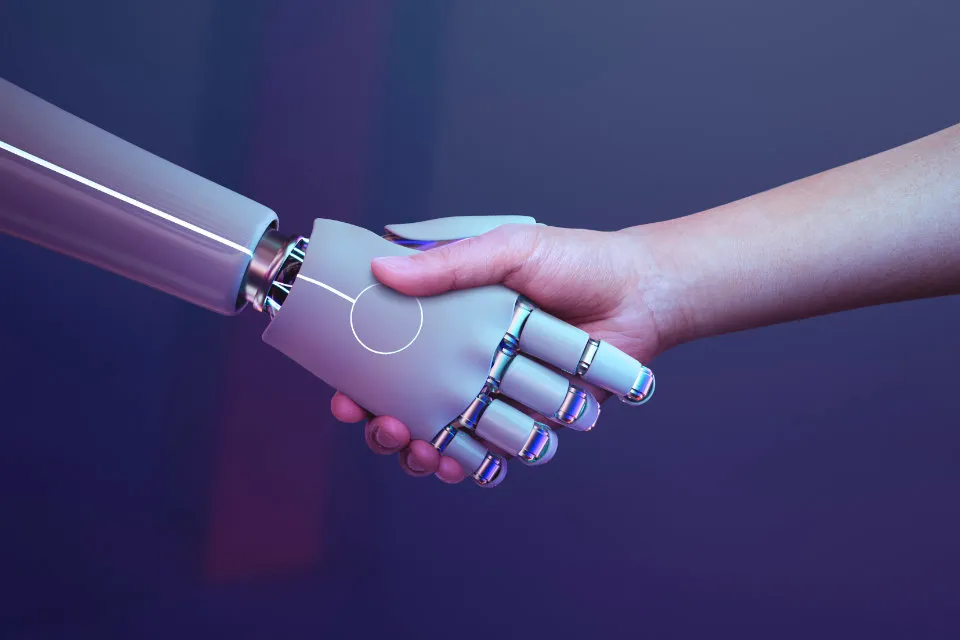
AI Technologies in Energy Resources Consumption Control and Prediction

Lukas Vida
8 min
The global energy landscape faces unprecedented challenges. Rising demand, driven by population growth and industrialization, collides with the urgent need to mitigate climate change by drastically reducing greenhouse gas emissions. Simultaneously, energy security concerns and volatile fuel prices underscore the critical importance of optimizing how we generate, distribute, and consume energy resources. In this complex equation, Artificial Intelligence (AI) has emerged not merely as a promising tool, but as a transformative force revolutionizing energy consumption control and prediction.
By harnessing vast datasets, identifying intricate patterns, and enabling real-time optimization, AI technologies are unlocking unprecedented efficiencies, enhancing grid stability, accelerating the integration of renewables, and empowering consumers – paving the way for a more sustainable, resilient, and cost-effective energy future.
Understanding the AI Arsenal for Energy
AI encompasses a suite of technologies, each playing distinct yet often interconnected roles in energy management:
Machine Learning (ML)
The cornerstone. ML algorithms learn from historical and real-time data (energy consumption patterns, weather, grid status, equipment performance) to identify trends, build predictive models, and discover optimization opportunities without explicit programming. Key techniques include:
- Supervised Learning: For prediction tasks (e.g., forecasting demand, predicting renewable output) using labeled data.
- Unsupervised Learning: For anomaly detection (e.g., identifying faulty equipment or non-technical losses) and pattern discovery (e.g., customer segmentation for demand response).
- Reinforcement Learning (RL): Enables systems to learn optimal control strategies through trial and error in complex, dynamic environments (e.g., optimizing building HVAC systems, grid dispatch).
Deep Learning (DL)
A subset of ML using artificial neural networks with multiple layers. DL excels at processing complex, high-dimensional data like:
- Computer Vision: Analyzing satellite/drone imagery for solar potential assessment, monitoring power line vegetation encroachment, or inspecting infrastructure.
- Time Series Forecasting: Highly accurate short-term and long-term predictions of energy demand and renewable generation (solar irradiance, wind speed) using architectures like LSTMs (Long Short-Term Memory) and Transformers.
Natural Language Processing (NLP)
Analyzing text data from maintenance logs, customer inquiries, or weather reports to improve predictive maintenance, customer service, and forecast accuracy.
Optimization Algorithms
Often combined with ML/RL, these algorithms find the best possible solution (e.g., minimizing cost, maximizing efficiency) under complex constraints (e.g., grid stability, generation limits, storage capacity).
Revolutionizing Consumption Control: From Passive to Proactive
AI is shifting energy consumption management from reactive to proactive and predictive:
Smart Buildings & Industrial Optimization
AI-Driven Building Management Systems (BMS)
Go beyond simple schedules. AI analyzes occupancy (via sensors/cameras), weather forecasts, electricity prices, and internal conditions to dynamically optimize HVAC, lighting, and plug loads in real-time, achieving significant energy savings (often 15-30%) while maintaining comfort. Google’s use of DeepMind AI in its data centers reduced cooling energy by 40%.
Industrial Process Optimization


AI models monitor complex industrial processes (manufacturing, refining, chemical plants), identifying inefficiencies, predicting equipment failures before they cause energy spikes or downtime, and recommending optimal operating parameters to minimize energy use per unit of output.
Demand Response (DR) 2.0
AI transforms traditional DR:
- Predictive Targeting: ML identifies customers most likely to participate and reduce load effectively based on historical behavior and segmentation.
- Automated & Dynamic Response: AI systems can automatically adjust non-critical industrial processes or aggregated smart home devices (thermostats, EV chargers) in response to grid signals or price incentives, providing faster and more reliable load reduction.
- Personalized Incentives: AI tailors DR program offers to individual customer profiles for higher engagement.
Prosumer Management
For homes/businesses with solar panels and batteries, AI optimizes when to consume grid power, store solar energy, discharge batteries, or sell back to the grid based on forecasts, tariffs, and consumption patterns, maximizing self-consumption and financial return.
Enhancing Prediction: Seeing the Energy Future
Accurate forecasting is fundamental to efficient and reliable energy systems. AI dramatically improves predictive capabilities:
Energy Demand Forecasting
Short-Term (STLF)
Critical for grid operators balancing supply and demand hourly or daily. AI models incorporate weather (temperature, humidity), calendar effects (day of week, holidays), economic activity indicators, and even social events to achieve highly accurate near-term predictions, reducing reliance on costly peaking plants and minimizing imbalance costs.
Long-Term (LTLF)
Essential for infrastructure planning, capacity expansion, and policy making. AI analyzes historical trends, economic projections, demographic shifts, electrification rates (e.g., EV adoption), and climate change impacts to forecast demand years ahead.
Renewable Energy Forecasting
Solar Power
DL models analyze satellite imagery, sky cameras, weather model outputs, and historical plant data to predict cloud cover and solar irradiance minutes to days ahead. Accuracy improvements (reducing forecast errors by 20-40% compared to traditional methods) allow for better grid integration and reduced curtailment.
Wind Power
AI predicts wind speed and direction at turbine hub height using numerical weather predictions, SCADA data, and even lidar measurements, enabling more efficient scheduling and grid commitment. NREL studies show ML can reduce wind forecasting errors significantly.
Predictive Maintenance (PdM)
Moving beyond scheduled maintenance, AI analyzes sensor data (vibration, temperature, current, acoustics), historical failure records, and operational parameters from grid equipment (transformers, turbines, cables) and consumer appliances. ML models detect subtle anomalies indicating impending failure, allowing maintenance to be performed just in time, preventing costly outages, improving safety, and optimizing maintenance resource allocation.
Optimizing the Grid: The AI-Powered Nervous System
The electricity grid, becoming increasingly complex with distributed energy resources (DERs), requires AI for stability and efficiency:
Advanced Grid Management
State Estimation & Real-Time Monitoring
AI processes vast amounts of data from Phasor Measurement Units (PMUs), smart meters, and sensors to provide grid operators with a highly accurate, real-time view of voltage, current, and power flow, crucial for stability.
Anomaly Detection & Cybersecurity
AI continuously monitors network traffic and grid behavior to detect cyberattacks (e.g., false data injection) or physical anomalies (e.g., falling trees on lines) much faster than human operators.
Fault Prediction & Location
AI algorithms predict potential fault locations based on weather, historical fault data, and line conditions, speeding up restoration times.
Integration of Distributed Energy Resources (DERs)
Managing millions of solar panels, batteries, EVs, and smart appliances is impossible manually. AI acts as the orchestrator:
- Virtual Power Plants (VPPs): AI aggregates and optimizes the dispatch of numerous small-scale DERs, enabling them to act like a single, controllable power plant, providing grid services (balancing, reserves).
- Optimal Power Flow (OPF): AI-powered OPF solutions continuously calculate the most efficient and stable way to route power through the grid, considering the variable output of renewables and flexible demand from DERs.
Energy Storage Optimization
AI determines the optimal times to charge and discharge grid-scale and distributed batteries based on price signals, renewable forecasts, and grid congestion, maximizing their value for arbitrage, grid support, and backup power.
Challenges and Considerations
While transformative, AI deployment in energy faces hurdles:
Data Quality, Quantity, and Accessibility
AI models require vast amounts of high-quality, granular data. Siloed data within utilities, privacy concerns (especially consumer data), and lack of standardization hinder model development and effectiveness.
Cybersecurity Risks
AI systems themselves become high-value targets for cyberattacks. Robust security protocols and adversarial testing are essential.
Model Complexity, Explainability, and Trust
Highly complex AI models (especially deep learning) can be “black boxes,” making it difficult to understand why they make certain predictions or decisions. This lack of explainability raises concerns about trust, accountability, and regulatory compliance (“algorithmic transparency”).
Integration with Legacy Systems
Many utilities operate aging grid infrastructure and control systems. Integrating modern AI solutions can be technically challenging and costly.
Cost and Skills Gap
Developing, deploying, and maintaining sophisticated AI systems requires significant investment and a workforce skilled in both data science/AI and power systems engineering – a talent pool currently in short supply.
Ethical Considerations
Bias in training data can lead to unfair outcomes in areas like targeted demand response or grid investment decisions. Algorithmic fairness must be prioritized.
The Future Outlook: Towards an Intelligent Energy Ecosystem

The trajectory points towards deeper and more pervasive AI integration:
- AI at the Edge: Processing data locally on devices (smart meters, inverters, sensors) for faster response times, reduced bandwidth needs, and enhanced privacy.
- Generative AI for Simulation & Design: Using AI to simulate complex grid scenarios, optimize renewable plant layouts, or design next-generation energy-efficient materials and systems.
- Hyper-Personalization: AI tailoring energy efficiency recommendations, tariffs, and services to individual consumer behaviors and preferences with unprecedented granularity.
- Autonomous Grids: Increased use of RL and advanced control systems enabling self-healing grids that automatically detect, isolate, and restore faults, and self-optimize for efficiency and resilience with minimal human intervention.
- AI for Carbon Accounting & Tracking: Leveraging AI to accurately track and optimize carbon footprints across complex energy supply chains in real-time.
- Convergence with IoT and 5G/6G: Ubiquitous sensors and ultra-fast, low-latency communication will provide the data foundation for even more sophisticated AI applications.
Conclusion: AI as the Catalyst for Sustainable Energy
AI technologies are no longer futuristic concepts in the energy sector; they are actively reshaping how we control and predict energy resource consumption. From optimizing individual buildings and factories to managing continent-spanning power grids, AI delivers tangible benefits: enhanced efficiency, reduced costs, lower emissions, improved reliability, and accelerated renewable integration. While challenges related to data, security, explainability, and skills remain, the potential is undeniable. As AI algorithms become more sophisticated, data becomes more accessible, and computational power increases, the synergy between AI and energy will only deepen.
Embracing and responsibly deploying these technologies is not merely an option but an imperative for building a sustainable, resilient, and intelligent energy future capable of meeting the demands of the 21st century and beyond. The journey towards truly intelligent energy management, powered by AI, is well underway.
Let’s Build Future Together.
Get Started Now


